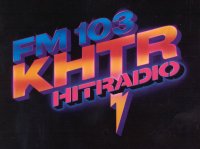Radio Articles
Hit Radio Was Born In St. Louis
It seemed like it happened overnight. Sleepy, somewhat stodgy KMOX-FM suddenly came alive and set the market on its ear.
For years, KMOX-FM had been nothing more than a mellow music format originating in a huge automation system on the seventh floor at One Memorial Drive. The machinery was so voluminous it took up a whole room.
Jocks were told to do whatever they could to sound live, but the tape playback equipment would often malfunction, meaning listeners would hear announcers introducing songs, to be followed by a completely different set of records the announcer hadn’t even mentioned.
Ed Scarborough had been a disc jockey here in St. Louis for Pulitzer’s KSD, but when he moved a few blocks east to the CBS studios at One Memorial Drive, things quickly changed. CBS corporate had designated some of its FM stations for major format changes: WCAU-FM in Philadelphia, WBBM-FM in Chicago, and KMOX-FM. Scarborough’s job was to create the HitRadio format and make it a success in St. Louis.
Ed began the formatic transition in August of 1981. KMOX-FM went from the automated mellow format to a more contemporary, live sound. Scarborough remembers the transition time, “You might have heard John Cougar Mellencamp followed by the Mamas and Papas.”

An average listener may not have noticed all the tweaking that went on with the music playlist, but Scarborough worked long and hard to establish which new songs to play and which would not fit the format. He was quoted in an interview in Radio & Records as saying, “The most important factor is that the record sounds like KHTR or it doesn’t get on the air.”
He even credits station manager Tim Dorsey with giving him complete leeway to do whatever was necessary to succeed. The initial air staff of Kevin McCarthy, Bob Scott, Casey Van Allen, Craig Roberts, Scarborough and weekender Mike Jeffries eased the listeners out of the mellow sound and into the high-energy Hit Radio format, which placed emphasis on current music but was aimed at an adult audience rather than teens. Later Scarborough replaced himself on the air with John Frost, and Young Bobby Day was also added.
“I didn’t want the listener to hear a bunch of screaming kids on the stations,” Scarborough says. “I can’t say enough good things about those jocks.”
The transition was completed by December. All the older hits had been removed from the playlist and the call letters were changed to KHTR. In a move that is virtually unheard of today, local staffers had a say in the new logo design and selection of on-air jingles.
It was a standard joke around the building that the format didn’t sit particularly well with Robert Hyland, whose office was four floors below the KHTR studios. Hyland honestly didn’t understand it, but he had complete faith in Scarborough’s ability to make it work. This allowed Hyland to continue to focus his attention exclusively on KMOX, which at that time was showing an average quarter hour market share in the twenties. Combine that with KHTR’s highest Arbitron share of 10.6, and the two CBS stations in St. Louis had a combined average quarter-hour audience share over 30.
Hyland didn’t have to understand KHTR to appreciate its success.
(Reprinted with permission of the St. Louis Journalism Review. Originally published 02/06)